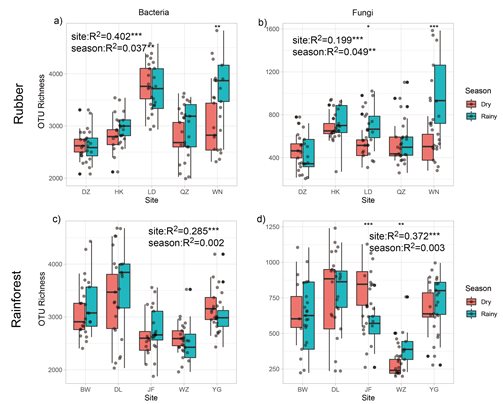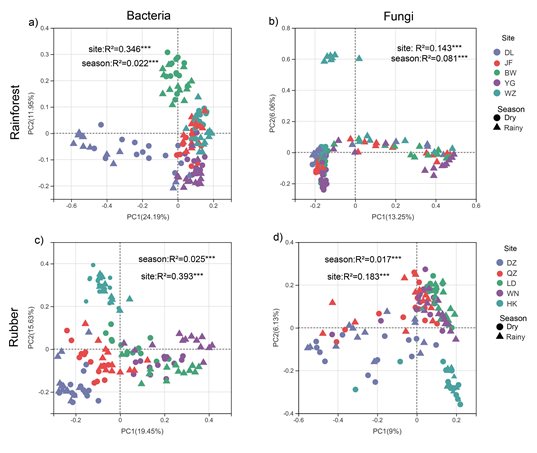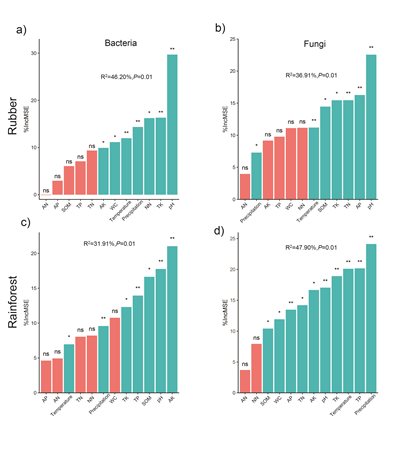Recently, the tropical forestry ecology research group of the Rubber Institute of the Chinese Academy of Tropical Agricultural Sciences found that, on a local scale, the spatial position explained more about the variation of tropical forest soil microbial community than the seasonal change.

Alpha diversity of bacteria and fungi in tropical rain forests and rubber forests
Tropical rain forest and rubber forest are two important forest types in Hainan Island. There have been studies on the changes of soil microorganisms in tropical forests with time or space, but there is no report on the relative contributions of space and season to their community changes. The members of the Tropical Forestry Ecological Team of the Rubber Research Institute of CATAS took the soil of rubber forests (Danzhou, Ledong, Wanning, Qiongzhong, Haikou) and tropical rainforests (Wuzhi Mountain, Diaoluo Mountain, Jianfeng Mountain, Bawang Mountain, Yingge Mountain) in Hainan Island as the research object, and analyzed the composition, diversity and main driving factors of soil bacterial and fungal communities using high-throughput sequencing analysis, The results showed that the spatial interpretation of soil microbial community variation was higher than that of seasonal variation. The main driving factors were climate factors (such as annual average temperature and rainfall) and soil pH, and the variation of these environmental factors was mainly explained by spatial location.

Beta diversity of bacterial and fungal communities in tropical rain forests and rubber forests

Predictors of bacterial and fungal diversity in tropical rain forests and rubber forests
Relevant research achievements were published in the Microbiology Spectrum under the title of "Space ther than seasonal changes explained more of the spatiotemporal variation of tropical soil microbial communities". Wei Yaqing, a doctoral student in the Rubber Research Institute of CATAS, is the first author of the paper, and the corresponding author is researcher Lan Guoyu. This research was supported by the National Natural Science Foundation of China (3227160331770661), Hainan Provincial Key R&D Project (ZDYF2019145) and the Special Fund for the Construction of Modern Agricultural Industrial Technology System (CARS-33-ZP3).


